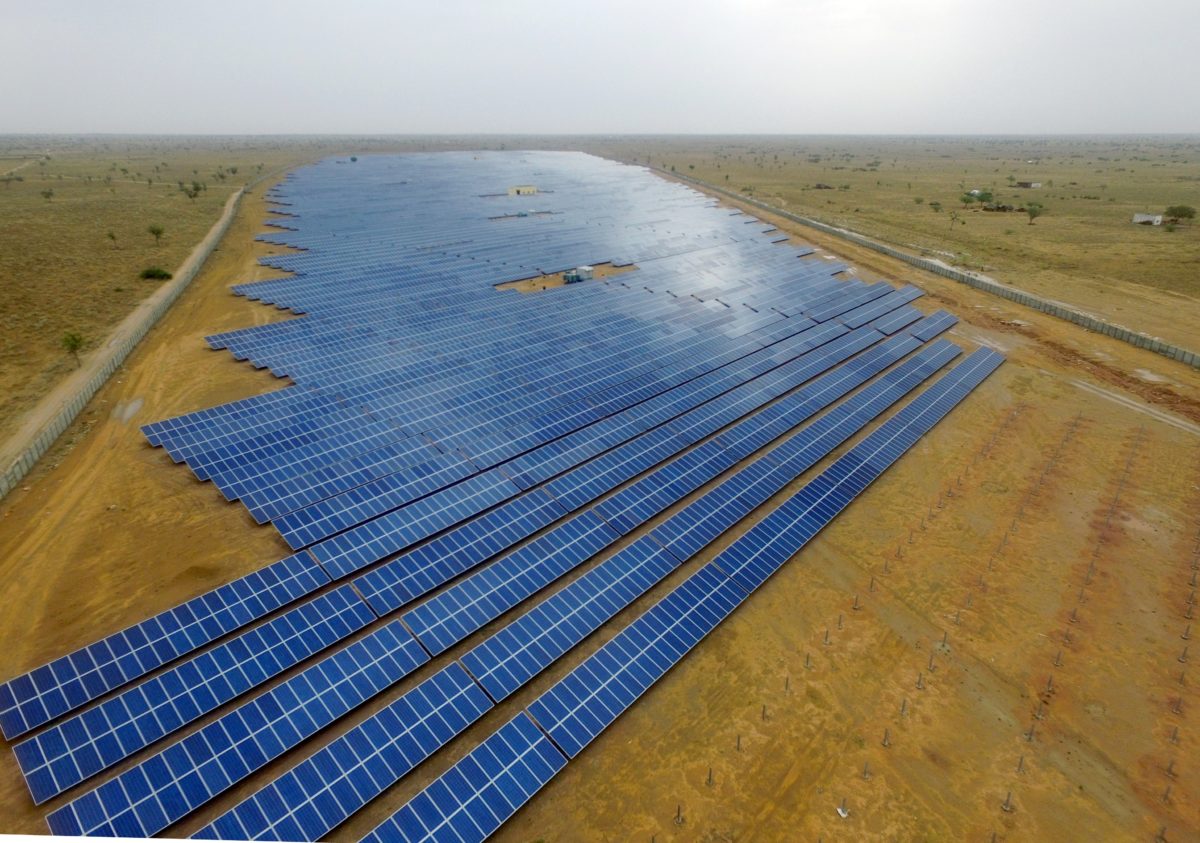A petition filed by the Indian Solar Manufacturers Association (ISMA) calling on India’s Directorate General of Anti-Dumping (DGAD) to introduce anti-dumping (AD) tariffs on solar imports from China, Taiwan and Malaysia comes at a critical time for the country’s solar industry, says Mercom Capital Group.
Having seen close to 10 GW of new capacity installed in 2016 amid record-low prices at auction, the momentum of the nation’s solar market could be derailed if measures to limit low-cost components from China are introduced, said Mercom Capital Group CEO Raj Prabhu.
“In all probability, the government is highly unlikely to disrupt the project development activity right when it is taking off and willingly create uncertainty in the markets when investors are warming to India’s solar sector,” Prabhu said.
The record-low tariff of INR 2.44 ($0.038)/kWh witnessed at the Bhadla Solar Park auction means that solar projects can now be commissioned at prices below that of coal, prompting Prabhu to add: “It is inconceivable that the Indian government will pursue this case, which would make the solar power procurement costs higher.”
The counter argument is that cheap Chinese components serve to boost installations only in the short term, pricing out Indian manufacturers increasingly left adrift in a free market landscape that inevitably favors the larger Chinese firms.
“This is not the first time there is a hue and cry against anti-dumping,” an official from the Ministry of New and Renewable Energy (MNRE) told Mercom Capital. “In 2012 a case was filed against the U.S., China and the EU; then in 2014 due to manufacturers’ demands the Ministry of Trade and Commerce gave a go-ahead to an AD petition, but after two years of investigating the issue and mulling over the findings, the petition was scuttled by the Ministry of Finance.”
Popular content
The official added that in 2014, just after the government set its bold 100 GW of solar by 2022 target, the feeling within the industry was there was enough opportunity for both domestic and foreign manufacturers to meet the demands of the market.
However, since the U.S. successfully challenged India’s Domestic Content Requirement (DCR) with the World Trade Organization (WTO) last year, opportunities for Indian solar companies have been more limited. A source at Indian firm MoserBaer Solar Limited told Mercom Capital Group: “If you want your manufacturers to expand their capacity, make laws aiding them. The DCR category ensured local manufacturers had a set market, but now due to the WTO ruling even that is gone.”
The feeling among many Indian solar firms is that in the long-term, unchecked Chinese imports will create a vacuum as local companies are priced out, leaving the entire sector dependent upon imports from other companies. Despite the introduction of AD duties and a Minimum Import Price (MIP) on Chinese solar modules and cells in the EU, many European companies have gone bust in the face of China’s might. In the U.S., the recent Suniva insolvency has prompted the company to enact the Section 201 petition, which puts the issue of injurious trade practices before the U.S. president, Donald Trump. If Suniva wins this case, then it could adversely affect the U.S. solar market.
In India, the recommendation is for AD tariffs ranging from $0.11 to $0.81 per watt to be levied on solar cells and modules coming from China, Taiwan and Malaysia.
This content is protected by copyright and may not be reused. If you want to cooperate with us and would like to reuse some of our content, please contact: editors@pv-magazine.com.


I really don`t understand India- they have low cost workers and huge companies already in the field. Their strange system of keeping foreign investments out by uncertain legel rights is “well know”. So- to say it clear: Nearly every boom in production which happened in Asia did not happen in India or only domestic and far behind other Asian Countries.
So- it is their own fault not to invest in new PV productions capacities and latest equiment which will make them easy to compete with Malaysia, Taiwan, Thailand, … and China also. Ok, the Indians don`t like the chinese- but dear Indians: They are much more efficient and accurate then you guys- sorry to say. So India has to decide to subsidies unefficient local production with high electricity prices or market slow down. But what for? For companies unable to compete?
The request AD range is absurd as Sunive file is- companies (and maybe also countries) too stupid the produce electronics in an unefficient way and makinge stupid AD decisions should no longer be payed be tax- or electricity payers. No longer- as 9 out of 10 workers in the value chain of “Solar-Electricity” are not working in cell- und modules.
Solar is cheap and will become cheaper- time for free market and no time left for those who have been too stupid or greedy like Solarworld`s Boss e.g.